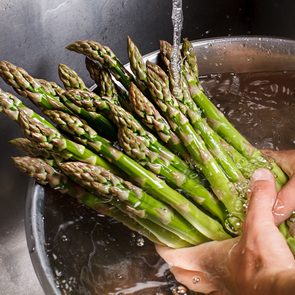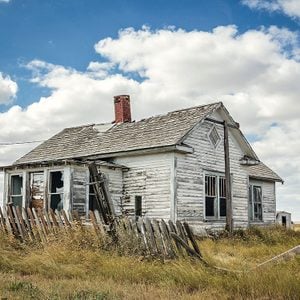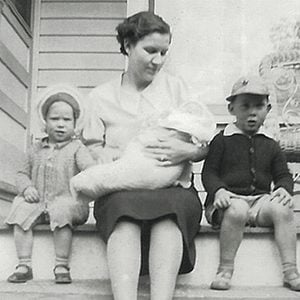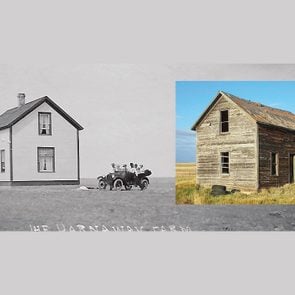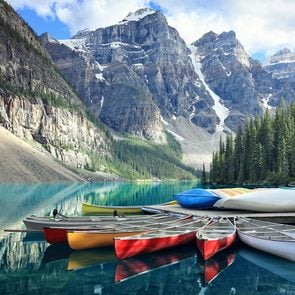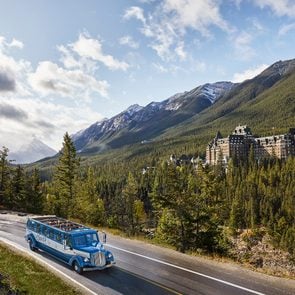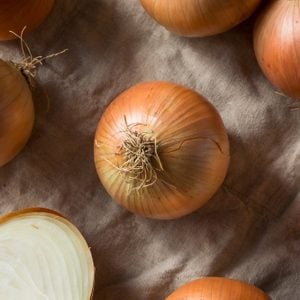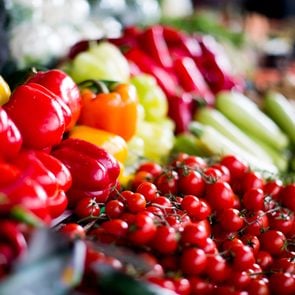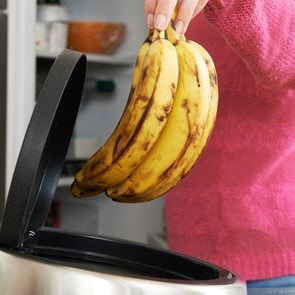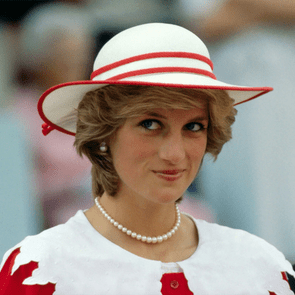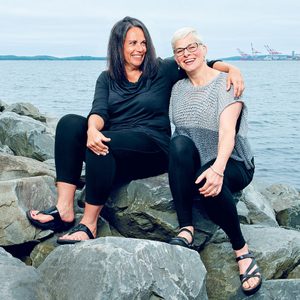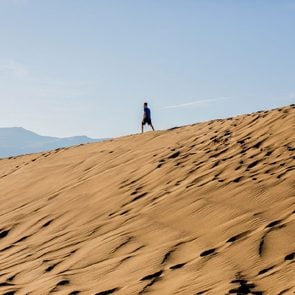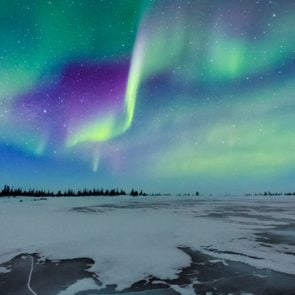What cloudy urine means
Cloudy urine often comes and goes without any obvious cause or reason for concern.
“Two-thirds of the time, we don’t diagnose why you have cloudy urine,” says Zeynep Gul, MD, a urologist at the University of Pittsburgh Medical Center.
Doctors will likely ask if you’re experiencing another other symptoms that accompany persistent cloudy urine, as these could help identify the underlying cause. However, the only way to know for sure is to have your urine analyzed, according to Elizabeth Kavaler, MD, a urologist at Lenox Hill Hospital, in New York City and author of A Seat on the Aisle, Please!: The Essential Guide to Urinary Tract Problems in Women.
Here are some reasons your urine might be cloudy.
Urinary tract infections
Urinary tract infections or UTIs, usually caused by E. coli bacteria, are among the most common infections in women. The white blood cells that collect to fight infection can contribute to cloudy urine, says Dr. Kavaler.
Other common signs of a UTI could include an urgent need to pee right away and painful burning while you urinate. Antibiotics easily treat most UTIs, but pregnant women who develop these infections need to be extra careful as they can raise the risk for preterm birth, among other complications.
Sexually transmitted diseases
Chlamydia and other sexually transmitted diseases (STDs) can also cause cloudy urine, says Dr. Kavaler. This is true for both men and women. As with UTIs, increased production of infection-fighting white blood cells can cloud the urine.
Often chlamydia, which is caused by a type of bacteria called Chlamydia trachomatis, causes no symptoms. However, when it does, they might include pain when you pee, discharge from the genital area or anus, genital itching, and pain in your lower abdomen.
Kidney and bladder stones
Cloudy urine can also indicate high levels of compounds called phosphates which, in turn, may be related to kidney stones, says Dr. Gul.
Kidney stones are hard masses formed when chemicals in the urine clump together to form crystals. Sometimes, the crystals stick together and grow too big to be excreted in your urine. That’s when they can lodge in your kidney or urinary tract, causing blockages and intense pain as well as cloudy, frothy, or foamy urine.
A good way to prevent kidney stones is to drink a lot of fluids. (Find out what happens to your body when you start drinking eight glasses of water a day.)
Foods
If certain foods irritate your bladder, you may get cloudy urine. Exactly which foods, if any, varies between people. “Everyone is different,” says Dr. Kavaler. “It could be caffeine, alcohol, spicy foods, or you could be allergic to something.”
Organ meat, red meat, and other foods rich in purines may also turn your urine cloudy, says Dr. Gul. Purines are needed to produce uric acid, which can contribute to kidney stones. Other high-purine foods to avoid: some seafood like sardines, scallops, high-fat dairy, and beer.
Dehydration
Fluids are essential for pretty much every cell in your body and for every process that keeps you alive. It helps you digest food, is an important blood component, maintains your temperature, and contributes to fighting infections.
If you’re not taking in enough water or you’re expelling more than you are ingesting (say, because you’re sweating, running a fever, or have diarrhea and/or vomiting), you could become dehydrated.
That state can also result in murky urine, says Dr. Gul. You could also have foamy or darker yellow pee and, if dehydration goes on long enough, it can lead to confusion, weakness, and may even be life threatening.
Retrograde ejaculation
Retrograde ejaculation is when men orgasm, but don’t ejaculate much, if any, semen. In men, semen and urine share the same passageway (the urethra) out of the body. When men ejaculate, the bladder should close over to keep semen out. If it doesn’t, the semen can leak into the bladder and eventually into the urine.
It’s not a common problem and may not even require treatment, unless it’s interfering with conception. You should investigate and treat any underlying problems, like diabetes or an enlarged prostate, that could be contributing to the problem. (Here are 13 secrets your urologist wants you to know.)
An enlarged prostate
One of the most common problems affecting men as they age is benign prostatic hyperplasia, better known as an enlarged prostate. This is when the prostate, the gland which makes the fluid portion of semen, enlarges enough to block parts of the urinary tract.
This can interfere with the bladder emptying completely, which means microbes can linger and proliferate in the urinary tract, leading to an infection, white blood cells, and cloudy urine. Other symptoms include peeing a lot and even bloody urine.
Diabetes
If you have uncontrolled or undiagnosed diabetes, which results in continuing high blood sugar levels, you could end up with cloudy urine, among other issues. Bacteria and yeast feed on this sugar, which is the perfect set-up for UTIs or yeast infections. The resulting inflammation and white blood cells can cloud your urine, says Dr. Kavaler.
If you have frequent UTIs, see a doctor. If it’s due to diabetes, you’ll learn ways to keep your blood sugar levels low and stable. This is the best way to prevent permanent organ damage. Uncontrolled diabetes is the leading cause of kidney disease. That, too, can lead to urinary symptoms. (Learn to spot the silent signs of diabetes.)
When to see a doctor
Cloudy urine is most likely to be transient and unconcerning, but there are times to act. One is if you have persistent urinary symptoms, especially if they’re associated with pain in your back (which could be a kidney infection) or blood in your urine, says Dr. Gul.
You should also see a doctor if you have fever and chills, nausea, or vomiting. For less serious scenarios, doctors can easily assess your urine with a quick test done in the office.
Next, find out 20 symptoms you should never ignore.

Growing up in Canada during the Great Depression was grim in many ways, but when, at 17 years of age, I looked back at my childhood it seemed idyllic even though we had no phone, running water or electricity. High schools and jobs were far away, so we had to leave our familiar village. I wrote this essay when I was homesick in my dormitory room at Rosthem Junior College:
Beautiful Blumenort
The friendly village of Blumenort in which I was born, is located in southern Saskatchewan. Lying just east of the No. 4 highway, it is right in the centre of a fertile farm area. Twenty-one brown frame homes occupied by 21 families stand on either side of the road running east and west. Each home is built on a yard-lot of similar size, and is joined to the next by a common fence. Around this group of homes is the community pasture and beyond stretch acres and acres of golden grain.
As you come along the highway and approach Blumenort at dawn you will hear the tinkle of a bell and the trampling of cattle hooves. The village herdsboy is just rounding up cattle and will take them to the community pasture. As soon as the bell is heard, each villager opens the gate and lets his cattle join in the general concourse of beasts.
Unique architecture is employed in the construction of the cozy homes. The house, pump-shed, barn, garage and granary are all harboured under one roof. At one end of the structure are the rooms used by the family. A hall usually used also as a pump house separates this from the barn. On the one side are several stalls for the cattle and beside this is a shed called the “oven side” used for storing chop and bags of sunflower seeds. Along the other end of the building is the granary and above this is the hayloft.
The church, the centre of community life, is situated in the middle of the village, opposite Flowerville School. All are welcome to worship here. When the harvesting is finished, ladies bake a cake, some buns, and roast fowl for the Thanksgiving Festival. Very few people are absent at this occasion because it gives them an opportunity for meeting not only people from our village but also from other nearby villages that have been cordially invited. Hopefully every one forgets his own needs with the result that the collection plate will groan under its weight.
The best of the harvest is exhibited in the food that is provided. An ample supply of provisions is on hand. As soon as one lady notices that there are only a few golden buns left, she calls Johnnie to her side. She whispers something to him and he dashes off towards home. In the blink of an eye he is back with a pail full of buns that she had put away in the pantry to be ready just in case they should be needed. Families bring a variety of tasty food and pickles cooked from the choicest vegetables. After having a delicious brown drumstick, each visitor receives a slice of cake topped with frothy icing. When all appetites have been satisfied, the villagers divide the remaining delicacies and happily return home.

As soon as snowflakes appear on the ground we begin to wonder whether it isn’t time for the pig butchering bees. One morning on our way to school we notice the men are gathered in little groups near the Funk, Friesen and Schmidt gates discussing the weight of the hogs. Now we are sure that there will soon be fresh spare-ribs. Typical Prairie cooperation is shown at this time. Friends help each other on that long and tiring meat-preparation day. The hams are salted, smoked and hung in a granary, while the lard pails are stored in the attic.
Because there are quite a few young people living so close together they can conveniently gather for sports all year round. A glassy ice-rink is constructed in Mr. Koop’s yard.
Keeping this rink in perfect condition provided a pastime for husky young fellows who have completed school. The dense shelterbelt around the schoolyard attracts huge drifts of snow. These drifts are sculpted into an excellent slide that gives pleasure to youngsters from December to March. In springtime the young people gather in the schoolyard to play softball and enjoy wiener roasts on warm June nights.
During the long, cold winter months social life continues in two Dutch dialects. The short paths leading from house to house are often traced by jovial neighbours. The men, usually dressed in overalls, are invited into the living room to discuss the prices of grain and the varieties of gopher poison. Women gather around the kitchen table to practice new embroidery stitches.
Whenever Death comes to visit the sunny vale, neighbours try to share the grief. The yard of the deceased is cleared of refuse and raked in preparation for the funeral. Two nights before the funeral almost every woman in the village sends her little Peter to the afflicted home with a pound of butter and a pail of milk for mixing bun batter. The following morning a man drives from home to home delivering a large lump of dough which will be baked into tiny buns for the meal at tomorrow’s funeral. Chairs and tables are also collected from homes to provide seating for guests at the funeral luncheon.
A minister clad in a long black jacket, black shirt, and high black boots speaks at this solemn occasion. He slowly reads a sermon. A few pauses are made in which the audience can reflect on its own past and sympathize with the mourners. When the body has been buried in the graveyard, which is located in the centre of the common pasture, the funeral guests return to share a meal.
A friendly relationship exists between neighbours in our little village. When unexpected company arrives at Mrs. Enns’s place, she doesn’t hesitate in going over to ask Annie Dyck to come and help her. Mrs. Gunther has a knack of baking peppernuts but she can’t tum out edible Easter bread. Her neighbour is an expert along this line, so they exchange delicacies. This exchange of goods is also of economic value. Lena and Tena carry the Free Press and the Courier across the street and exchange them so that their parents benefit from two papers and only pay for one.
The village of my childhood was surrounded by open stretches of Prairie that go as far as the eye can see. However, inside the small community the people are linked by a persistent spirit of caring for each other. In times of illness, fire or death, willing hands and sympathetic hearts reach out to help. Will people treat you as well anywhere else?
Later Life
Those were my anxious teenage thoughts when a letter from home told me of my parents’ planned move to the warmer West Coast. Because my parents moved to Matsqui, British Columbia, in 1948, I did not come back to Blumenort. Instead, I went to help them clean up after the Fraser River flooded our new home that spring. So it was necessary for me to quickly become independent, and teaching was the shortest route. Marriage, family and farming followed.
Finally, ten years ago we visited Blumenort and found it had kept up with the times and is a friendly, modern hamlet. And now as a senior, I have happily lived more than two decades in an open-spaced townhouse community called Glen View Meadows. It reminds me of Blumenort because the people are good and caring, just like the folks we had in our Prairie village.
Next, find out what laundry day was like in the 1930s.

The Western Provinces of Canada, Captured on Camera
Summer and fall are both perfect times to explore and photograph the western provinces of Canada, as the diversity of the landscape offers something exciting for everyone to enjoy. I wait in anticipation every year as the waterfalls begin to roar from the melting snowpack in the mountains, and the greens of spring and summer reveal themselves in the grasses and trees.
Summer heat waves frequently lead to thunderstorms and skies that come alive with amazing clouds, lightning and rainbows, while the cool air of autumn transforms the trees into pillars of breathtaking colour.
A decade ago when I purchased my first camera on a whim, I had no idea that my initial curiosity about photography would take me on a new career path as a landscape photographer. It is with gratitude that I am now able to share my view of nature with images of our beautiful country. Many other photographers I have met on my travels often share this common passion for capturing nature with a camera as a form of creative expression.

Saskatchewan
Saskatchewan will always hold a special place in my heart, as it is my home province and displays a wide range of photo opportunities. From the badlands in the south to the boreal forest of the north, it is incredibly diverse in its topography.

Many people are surprised to learn that the two largest sand dunes in Canada are both located in Saskatchewan. While the Athabasca Sand Dunes in the far north are accessible only by plane, the Great Sandhills southeast of Leader, Saskatchewan, are easy to find and explore. The fine white sands rival those of any beach in the Caribbean, while the minimal light pollution of the area offers the perfect opportunity to stargaze and try your hand at night photography.
Summer camping at one of the thousands of lakes in the province’s north will often reward you with colourful sunsets on the beaches, or with the wonder of the aurora borealis as shimmering lights dance in the night sky for a show you will never forget.

The badlands of southern Saskatchewan and Alberta were carved by receding glaciers from the last ice age more than 10,000 years ago and reveal a mysterious glimpse into the past. Castle Butte in south-central Saskatchewan is a 70-metre-tall, free-standing outcrop of sandstone and clay that was used as a landmark by Indigenous Peoples. It also attracted notorious figures such as Sam Kelly and the Sundance Kid as they evaded authorities as outlaws of the west.

Alberta
Dinosaur Provincial Park in southeast Alberta is another valley of badlands and is aptly named, as it is one of the richest hotbeds of dinosaur fossils in the world. Specimens discovered in the area are on display in museums around the globe.
Moving west, the Canadian Rockies are the ultimate playground to enjoy exploring with a camera. You could spend a lifetime hiking the trails of Kananaskis Country, Banff National Park and Jasper National Park and never see them all. But a surprising number of iconic locations are directly accessible by car without the need to travel deep into backcountry.

Moraine Lake in Banff National Park is perhaps one of the most beautiful lakes in the world, with its electric-blue waters and mighty backdrop of the Valley of the Ten Peaks. The view from the natural moraine or rock pile at the north end of the lake was featured twice on the $20 bill, in 1970 and again by the end of that decade.
The Icefields Parkway, stretching about 230 kilometres between Lake Louise and Jasper, is considered one of the most breathtaking drives on the planet. Alpine lakes, rivers, valleys and soaring mountain peaks greet you at every curve, offering endless photo opportunities.

With its amazing symmetry, Sunwapta Falls—located near the highway southeast of the town of Jasper—is not to be missed. Glacial waters flow around a small island of trees perched in the middle of the river before plunging 18 metres over rocky cliffs and into a pool below. An early morning visit may reward you with mist and fog flowing through the valley, adding some beautiful atmosphere to your images. (Find out more unforgettable things to do in Jasper.)
British Columbia
Crossing the Continental Divide in British Columbia, Takakkaw Falls in Yoho National Park is one of the highest waterfalls in Canada, with a total drop of 373 metres from the Daly Glacier above. Prepare to get wet from the spray of these powerful falls whose name means “wonderful and magnificent” in the Cree language.

If you enjoy photographing trees and the vibrant colours of autumn, travelling to Vancouver Island in mid-to-late October will never disappoint. Be sure to visit Avatar Grove near Port Renfrew to experience an old-growth forest with gigantic cedar and fir trees aged from 500 to 1,000 years old. Wooden stairs and boardwalks help you navigate through the most impressive specimens while keeping them protected on your self-guided tour.

The temperate climate throughout the city of Victoria and surrounding area provides the perfect conditions for many species of deciduous trees to thrive, allowing them to display the stunning fall colours that are a delight to photograph. Numerous public parks feature forest-like settings, with a large variety of tree species such as big-leaf maples and colourful willows. And be sure not to miss the many famous public gardens that feature a spectacular array of vibrant flora that will not disappoint. A number of these gardens feature stately old Japanese maple trees, a favourite of mine to capture during the height of fall colour. Their twisting, mossy branches and vivid red-and-orange leaves are a sight to behold and beg to have their picture taken.
From the badlands and northern lakes of Saskatchewan to the mountains and forests of Alberta and British Columbia, be sure to add the western provinces of Canada to your list of places to explore on a future summer or autumn holiday. Their beauty and diversity are sure to inspire you to fill your scrapbook with memories to last a lifetime.
Inspired by the beauty of the western provinces of Canada? Check out 10 more places in Canada every Canadian should visit.
Is there anything more delicious than fresh fruit? Okay, maybe chocolate… But fresh fruit is definitely up there, and it’s hard to beat the taste of a ripe banana. If you’re like us, you’re always trying to keep bananas fresh, especially if you’ve bought a bunch but only want to eat one at a time.
Here are some of the most effective ways you can keep bananas from browning too quickly. (Plan B is to make more of this ridiculously easy microwave banana bread!)
How to keep bananas longer
Hang them
Turns out there’s a scientific reason you should be hanging your bananas from a hook. Bananas start ripening as soon as they’re picked from trees—ethylene gas releases from the stems as soon as they’re picked, but when you hang bananas from a hook, the gas works more slowly. Hanging bananas also prevents them from bruising on the counter, which they’re more prone to do as they continue ripening.
You can pick up a fruit basket with a built-in hook or a small under-cabinet hook made specifically for bananas. Either way, keep your bananas at room temperature while they ripen on the hook.
Buy green bananas
The easiest way to prolong your bananas’ shelf life is to buy the greenest bananas you can find. They’re picked while still green, then slowly ripen over time to reach that bright yellow we love. Instead of grabbing perfectly ripened bananas you’re eyeing for banana muffins, grab a green bunch you can hang from your hook and watch ripen.
Wrap banana stems in plastic wrap
Remember that ethylene gas that makes bananas ripen? It comes from the stems, which means you can wrap those stems—with plastic wrap or aluminum foil—to slow down the ripening process. You may see grocery stores selling bunches of bananas with plastic wrap on the stems, but for best results, take your bananas apart and wrap their stems individually. (Check out more genius uses for plastic wrap all around the house.)
Place ripe bananas in the fridge
One of the cardinal rules of banana storage is to never store them in the fridge. But rules are meant to be broken, especially when it comes to bananas. You should keep green bananas far away from the fridge, but once your bananas have completely ripened, you can move them to the fridge where the cool temperatures will keep them from ripening further (for a few days at least).
Freeze your bananas
Freezing bananas is one of the easiest ways to keep them preserved for future use. But how you freeze bananas could have a big impact on how well they thaw. Freezing the entire bunch will darken the peels, and they’ll thaw poorly. Instead, consider freezing peeled, individual bananas or banana slices in resealable airtight bags.
Buy a banana storage container
Bruising can wreak havoc on your bananas. It leads to squishy parts and faster ripening, which is where hard cases built specifically for bananas come in handy. You can now buy reusable containers designed hold one banana at a time, which are a great way to keep ripe bananas ready for lunch (or for your afternoon snack). You may want more than one if you’re looking to protect a bunch, but if you have one overripe banana, this is a great solution.
Now that you know how to keep bananas longer, check out these insider tips on how to pick the freshest fruit at the grocery store.
When news broke about Princess Diana’s tragic death on August 31, 1997, the entire world mourned her loss. Cards, notes and flowers flooded into London from across the globe as people paid their condolences to the British royals. (Here’s what Kensington Palace looked like right after Princess Diana’s death.) And yet, Queen Elizabeth II remained quiet at Balmoral Castle in Scotland with her grandsons, Prince William, 15, and Prince Harry, 12. Many critics accused her of appearing detached and aloof at a time of tragedy. But a little-known letter that she wrote reveals the Queen felt anything but detached. (Here’s how Queen Elizabeth found out about Princess Diana’s death.)
Six days after Princess Diana’s death, the Queen wrote to one of her closest aides, Lady Henriette Abel Smith. Her heartfelt words offer a rare glimpse into the Queen’s other role: a grandmother consoling her grieving grandsons.
“It was indeed dreadfully sad, and she is a huge loss to the country. But the public reaction to her death, and the service in the Abbey, seem to have united people round the world in a rather inspiring way. William and Harry have been so brave and I am very proud of them,” Queen Elizabeth wrote. “Emotions are still so mixed up but we have all been through a very bad experience!”
Those close to her have revealed even more insights into Her Majesty’s seemingly cold reaction to Diana’s death. “She was being a proper granny. What was the point of bringing the boys down to sit in London with nothing to do but sit there feeling sad about mum?” Margaret Rhodes, the queen’s cousin and close friend told CNN in 2012. “Personally, I think I would have behaved in the same way.”
Queen Elizabeth II finally broke her silence during a live broadcast from Buckingham Palace the night before Princess Diana’s funeral at Westminster Abbey. “[Diana] was an exceptional and gifted human being,” Queen Elizabeth said. “In good times and bad, she never lost her capacity to smile and laugh, nor to inspire others with her warmth and kindness.”
Next, check out 20 rarely seen photos of Princess Diana.
Queen Elizabeth II and Princess Diana had their fair share of ups and down, not unlike an actual mother-daughter relationship. Even though Prince Charles and Princess Diana had officially divorced the year before, it didn’t mean that Diana’s death was any less of a loss for Britain’s monarch.
British author, Ingrid Seward, who covered the royal family for 18 years, unearthed the heartbreaking details of what went down in the royal household on the tragic morning of Aug. 31, 1997, in her book The Queen & Di.
The Queen was soundly asleep at Balmoral Castle, her summer home in Scotland, when she was awoken in urgency by one of her aides during the wee hours of the morning. She wrapped herself up in her old-fashioned sleeping gown to meet her son, Prince Charles, in the corridor. He informed her that Princess Diana and her lover at the time, Dodi Fayed, had gotten into a horrific car accident in Paris. All they knew was that Fayed was reported dead, but Diana had survived. As Prince Charles took more calls to get updates on Princess Diana’s condition, the Queen, in English fashion, ordered her staff to make a pot of tea. But everyone in the castle was too anxious to drink it so the tea just sat there on the table.
Initially, the Queen was told that Diana had walked from the accident virtually unscathed. Yet the good news quickly turned sour when another call rang through. Prince Charles was told, “Sir, I am very sorry to have to tell you that I’ve just had the Ambassador on the phone. The Princess died a short time ago.” The Queen watched as her son’s composure broke into a puddle of tears—a raw emotion the public never saw.
The Queen was equally stunned and in shock. In spite of their issues, Seward said that the Queen still had some affection and sympathy for her troubled former daughter-in-law. She thought Diana showed great potential and saw her death as “a terrible waste.”
Next, find out what Kensington Palace looked like after Diana’s death.
In the aftermath of the tragic death of Princess Diana, most of the attention shifted to Prince Charles and their sons, William and Harry. Even Diana’s younger brother, Charles, 9th Earl Spencer, has had the spotlight on him since he gave a heart-wrenching eulogy at her funeral. But not many remember Princess Diana’s older sisters, Lady Sarah McCorquodale and Lady Jane Fellowes.
Diana might have won hearts over around the world, but her outgoing sister Sarah is to thank for her princess status. Lady Sarah, who was six years older than Diana, actually dated Prince Charles first. But the oldest Spencer sister told a reporter in the late 1970s that she wouldn’t marry her then-boyfriend “if he were the dustman or the King of England,” according to the Mirror. Suffice to say, the relationship didn’t last long after that.
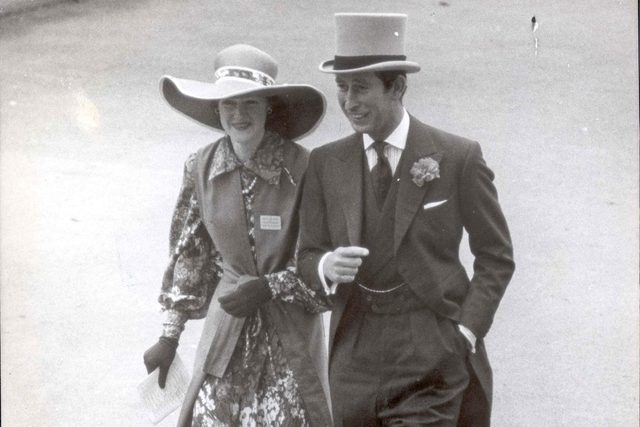
Later, Prince Charles would move his gaze to his ex’s sister, who was 16 when they met in 1977. Three years later, the two started a romance of their own, according to People.
By this time, Lady Jane, who was four years older than Diana, was already married to Robert Fellowes, who was assistant private secretary to Queen Elizabeth at the time. Jane and her husband invited Diana to join them on a visit to the Queen’s Scottish home, Balmoral. During that summer 1980 trip, Diana and Charles’s relationship went public, and the budding romance was in full swing.
In February, the two were engaged. (Here’s why Diana’s engagement ring infuriated palace officials.) Still, Sarah—who by then was married to Neil McCorquodale—called herself “Cupid” after Diana and Charles’s wedding plans were announced.
Despite the fact that her sister married her ex, Sarah stayed close with Princess Diana over the years. She sometimes travelled with Diana as an unofficial lady-in-waiting. As Diana and Charles’s relationship started falling to pieces, Sarah—known as the wildest of the sisters—actually cheered on her little sister’s own infidelity. “I think Sarah knew about Diana’s affairs,” royals author Judy Wade tells People. “In a way, she even encouraged Diana to be wild and to have lovers.” (Here are more Princess Diana facts most people don’t know.)

Meanwhile, Diana’s bad marriage put a strain on her relationship with her other sister. While Princess Diana became increasingly frustrated with the royal family, Jane’s husband was promoted to the Queen’s private secretary in 1990. Diana resented her brother-in-law and even accused him of participating in plans to monitor her phone calls, according to the Daily Mail. Jane was stuck in the middle, choosing between her sister and her husband. The sisters barely spoke during the last year and a half of Diana’s life. (Here’s how Diana spent the final weeks of her life.)
Still, after Diana’s deadly car crash in August 1997, both sisters (and Charles) went to Paris to bring the body back to the U.K. “I think I felt shock, but I don’t think I felt anything else,” says Sarah in a 2017 BBC documentary, Diana, 7 Days. “Just love and shock.”
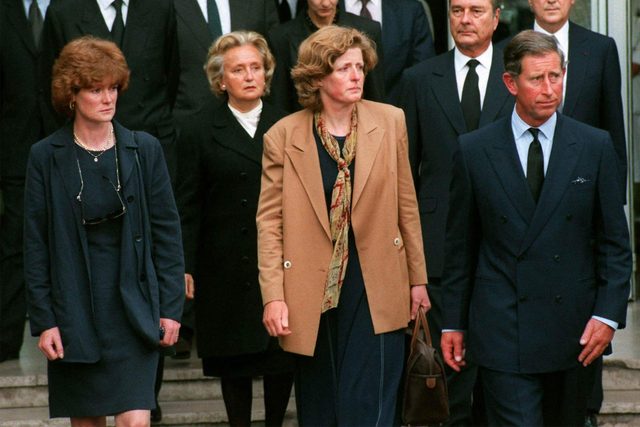
Sarah later became president of the Diana, Princess of Wales Memorial Fund, which officially closed in 2012. She also gave evidence during an inquest into Diana’s death in 2007, helping to lead to the ruling that her sister was unlawfully killed.
On the other hand, Jane has stayed famously silent over her sister’s death. In her first interview after the tragedy, Lady Jane famously talked with The Lady magazine just about her youth crime charity Only Connect and didn’t mention anything about her late sister. She also chose not to be part of Diana, 7 Days.
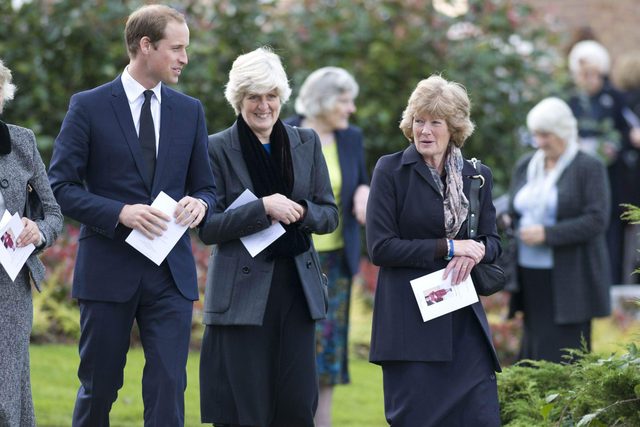
Still, that doesn’t mean Jane has been holding any grudges. “It’s been terrible for Jane that Diana died before they could properly make it up,” an old family friend told the Daily Mail. Jane’s daughter, Laura, was even named a godparent of Diana’s granddaughter, Princess Charlotte. Next, get a look at these stunning, rarely seen photos of Diana.
[Source: AOL]
Every morning, millions of Canadians begin their day with a cup of joe… Or two or three. Drinking coffee has become a time-honoured way for people to start their morning routine, maybe relax a bit, or socialize in the office kitchen. But how much coffee is too much? Some say it may be when you start exhibiting symptoms like anxiety and stomach pain, but science has found an exact number of cups per day that can tip the scale from being helpful to harmful.
The health benefits
If you’re about to throw away your coffee maker for fear it’ll cause you harm, don’t. There are lots of health benefits in your daily cup. A November 2015 study from Circulation found coffee was linked to a reduced risk of mortality. It can help potentially lower your chances of cardiovascular disease, type 2 diabetes, Parkinson’s disease, uterine and liver cancer, cirrhosis and gout, according to some studies reported by Harvard University.
A study from the American Heart Association found consuming both caffeinated and decaffeinated coffee was associated with a lower risk of mortality. Even more important, there was no link found between consumption and cancer, going against previous guidelines that labelled coffee as a possible carcinogen. The drink can also help prevent damage to your DNA thanks to the antioxidant and anti-inflammatory qualities found in the beans.
The danger zone
Even if your coffee is healthy, you do not want to get into a six-cups-a-day habit. New research from the University of South Australia has found drinking six or more coffees a day can counteract some of the drink’s benefits and increase your risk of heart disease by up to 22 per cent. According to Science Daily, this is the first time experts have determined a safe upper limit on consumption. The study looked at long-term consumption and cardiovascular disease and found that excessive caffeine can cause high blood pressure, which can lead to heart disease.
“Coffee is the most commonly consumed stimulant in the world—it wakes us up, boosts our energy, and helps us focus—but people are always asking ‘How much caffeine is too much?’,” study researcher Professor Elina Hyppönen of the Australian Centre of Precision Health says in Science Daily. “Most people would agree that if you drink a lot of coffee, you might feel jittery, irritable, or perhaps even nauseous—that’s because caffeine helps your body work faster and harder, but it is also likely to suggest that you may have reached your limit for the time being.”
There you have it. Unless you’re feeling the symptoms, you may want to aim to keep it to five or fewer cups to get the health benefits of coffee without the risk of heart disease down the line.
Next, find out 10 easy ways to make your coffee habit even healthier.
Trace MacKay puts the “pro” in procrastination. As a pre-teen, she entered a speaking competition and only started writing her speech the night before. In veterinary school, she pulled all-nighters to cram for exams. Now 48 years old and living outside of Sauble Beach, Ontario, she works part-time as a vet and part-time as a consultant. But she still procrastinates on everything from her taxes to work projects.
“I’ll do just about anything to procrastinate. I’ll play sudoku on my phone. I’ll strike up a conversation with somebody,” says MacKay. “Especially right now, working from home, I’ll do some laundry, or go in the garden to water or weed, or take longer reading the paper in the morning than I should—all just to delay starting my workday.”
MacKay has developed strategies to stop procrastinating. She sets early deadlines at work and asks her accountant to book her a personal cutoff a month before taxes are due. But because her procrastination has never gotten her into hot water, MacKay says she’s never been forced to address it. So she keeps delaying.
Even if you’re not a serial procrastinator, chances are there are many times you’ve put off a must-do task in favour of doing another, more fun one. In its more harmless forms, procrastinating can lead us to let our yards get messier than we’d like, or delay a much-needed vacation. In its more pernicious forms, it can keep us from having important conversations with loved ones or delay addressing health issues. And it can take its toll on our self-confidence, health and happiness.
Luckily, there are easy and practical steps we can take to stop procrastinating and start living the lives we want to.
How to Stop Procrastinating
The biggest misconception we have about procrastination is that it’s a time management problem. If we make more lists or get a time management app, the thinking goes, we’ll solve all our problems. But such methods rarely work. That’s because procrastination is all about emotional regulation: we procrastinate because we’re hard-wired to choose feeling good in the moment over feeling good in the long term.
“Procrastination is as old as the human condition,” says Tim Pychyl, head of the Procrastination Research Group at Carleton University. “Wanting to feel good now is basically a human need.” Unfortunately, delaying the necessary often creates feelings of regret and shame. The more we procrastinate, the more this cycle becomes entrenched and the worse we actually feel.
Pychyl suggests taking three steps to get your procrastination habits under control. First, learn how to tell the difference between procrastination and purposeful delay. Whereas procrastination is often irrational (you put off filing your taxes even though it will make you more stressed), purposeful delay tends to be rational (you complete an assignment the night before because the pressure helps you perform). Second, realize that when you’re procrastinating, you’re acting against your own self-interest. And lastly, learn to forgive yourself for messing up.

Identify the First Step
The next time you’re tempted to procrastinate, Pychyl says to ask yourself: “What’s the next action I would take on this task if I were to get started on it now?” Have an important project at work you’re not sure how to get started on? Set a meeting with your boss to clarify expectations. Want to finally tackle that home renovation project? Make a list of the tools and materials you’ll need to do the job. Setting a manageable and realistic first step shifts your attention from feelings of uncertainty or fear onto a low-stress, easily achievable action, and it also gives you a sense of agency. “Our research and lived experience show very clearly that once we get started, we’re typically able to keep going,” says Pychyl. “Getting started is everything.”
Dr. Piers Steel is a professor of organizational dynamics and human resources at the University of Calgary who began studying procrastination because of his own struggles with it. “These are not exactly difficult lessons to learn,” he says. “But we never got cc’d on the instruction manual for our own brains.” Steel suggests that framing actions in terms of time can also be helpful: what can you do in the next 10 minutes, or before lunch?
For example, say you want to Marie Kondo your basement, but the thought of tackling your piles of stuff makes you want to slam the door shut and run in the other direction. Instead, try dividing your basement into sections that can be tackled in 30-minute increments. Set a goal to do one per day, and get started on the first one immediately.
Use Your Power Hours
Give yourself an even better chance of succeeding by setting cues and intentions for yourself, and learning how to maximize your power hours.
Setting cues and intentions is all about making it as easy as possible to follow through on a task or goal. Say you’re struggling to establish an exercise routine in the mornings. Try setting your gym clothes out the night before and putting your shoes by the door. Keep forgetting or putting off doing breast self-exams? Set an intention to do one every time you’re in the shower.
Making the most of your power hours, meanwhile, is all about scheduling tasks for the time (or times) of day when you’re at your most productive and motivated. Want to train for a 10K run? Assess when you have the most energy to exercise. Need to pull together a family savings plan? Figure out when you and your partner have the most brain space for what could be a stressful conversation.
This approach has worked for MacKay, whose most productive hours tend to be right before lunch. Conversely, she’s learned not to bank on her afternoons: “That’s prime napping time,” she says, laughing. “I know then I’ll think, ‘Oh, I have so much to do. I should probably go have a nap.’”
Pychyl stresses that conquering your procrastination isn’t just about feeling better in the moment—it’s about having more agency over your life. “Time is a non-renewable resource,” he says. “We just don’t know how much we’re going to get of it. We need to stop playing around at the edges and get on with it.”
Ready to stop procrastinating? Start with these tips on how to live a happier life!

We laced up our hiking boots and began a short evening trek over the undulating sand dunes of a remarkable geological phenomenon, the Carcross Desert, billed by Yukon Tourism as “the smallest in the world.” To the east lie mountains upon which Dall sheep lazily grazed and over whose highland plateaus the caribou of the southern Yukon had meandered for millennia. To the west glimmered Lake Bennett.
In the spring of 1898, the impatient thousands who had been waiting at the head of the lake for the ice to break began a frenzied two-week race along the treacherous water system of the Yukon River to the gold-laden creeks near Dawson City. This was during the historic Klondike Gold Rush.
Below us lay the sleepy hamlet of Carcross, its name a shortened version of the original, Caribou Crossing. It was here, in the years before the white man swarmed into the Yukon, that the caribou would cross the river, and here that the First Nations Peoples would intercept them to fill their meat caches for the winter.

Unforgettable Places to Visit in the Yukon
There is something special about playing tourist guide to a good friend, showing him places familiar to you and watching those places being viewed in enchanted wonder by someone who had never previously visited—not to mention recalling your own delight when you yourself had first discovered them, many years earlier. I had such an experience when I got to show my good friend Vern Fanjoy around a portion of the southern Yukon. It was an important trip for both of us. Although I’d moved out of the territory 15 years earlier, I never really left, as I kept my log cabin there, returning most summers to get my “northern fix.”
This trip for Vern was part of a healing process: his wife had died that spring, and he, along with his two grown sons, were still coming to grips with their grievous loss.
Earlier that day we had wandered around Carcross for an hour, snapping photos of the village’s picturesque log cabins, most of which had seen little change over the past century. Paintings by the artist Ted Harrison, who had once taught at the village school, feature many of the buildings we were photographing, including the tall-steepled Anglican church that presides over one of the village’s street corners.
We had also paid a respectful visit to the Carcross cemetery. Most of the group who had first discovered gold in the Klondike now rest here. When the world learned about that find, 30,000 hopeful prospectors stampeded into the Yukon in the greatest gold rush the world had ever seen.
Discover more historical landmarks every Canadian needs to visit.

Back to Nature in the Yukon
Time passes quickly. Eight nights later, Vern and I relaxed on the beach at my cabin, quenching our thirst with locally brewed beer and reminiscing about the previous week. It was a warm, calm evening and the lake was a mirror, reflecting the mountains on the far shore. My cabin lies on the water trail that the goldrush stampeders took to the Klondike—and which is an excellent camping spot—so they may well have gazed out at the same scene.

Vern and I had seen and done a lot over the previous week, starting with spending one day canoeing the Snafu Lake system—one of my favourite day trips. We did a bit of fishing and caught some pike that, pan fried with butter and garlic, we devoured for supper that same evening.
We also went trout fishing on Tagish Lake with my good friend “Breakaway” Bob Ehman (a nickname well-earned in the Whitehorse hockey community) and had a delicious fish fry at Bob’s cabin.

Another day, we stopped in to have lunch with my good friends Peter and Christel Percival at their Cowley Lake homestead. The view from their living room overlooking the lake and several ranges of mountains to the west is spectacular. On previous visits I’d watch caribou and moose crossing the lake and I scoped out Dall sheep in the mountains. Lunch that day was moose ribs, which had been simmered in a slow cooker in succulent juices and spices. Like the view, Christel’s recipe was spectacular.

Whitehorse
On yet another day, we putzed around in Whitehorse. There’s a lot to see in the Yukon’s capital. For example, there’s the longest wooden fish ladder in the world—which chinook salmon access after having travelled from the Bering Sea and up the Yukon River in one of world’s longest upstream salmon migrations.
We visited the Yukon Beringia Interpretive Centre. It looks back into the amazing world of ice-age Yukon, replete with artifacts and exhibits of woolly mammoths, giant beavers, mastodons and other prehistoric creatures.

We walked the cliffs above Miles Canyon, a dramatic and treacherous narrowing of the Yukon River just south of Whitehorse. Many gold seekers drowned there in 1898.
Skagway, Alaska
Finally, we visited Skagway in Alaska, milled about with tourists from three cruise ships and then drove out to the trailhead of the Chilkoot Pass. For an hour, we hiked the path over which the gold seekers had clambered—just so Vern would be able to say that he had done it. I had been over the Chilkoot Trail four times before, each excruciating occasion more exhilarating than the last—the Chilkoot is a tough trek.
More Places to Visit in the Yukon
We fit a lot in during the short time Vern was able to spend in the Yukon, but any further exploration would have to wait for another visit. We hadn’t been up the Alaska Highway beyond Whitehorse, where lies the breathtaking scenery of Kluane National Park. We hadn’t been north to Dawson City and its historic Klondike goldfields. Nor had we been over the northern tundra of the Dempster Highway and on to Inuvik in the Northwest Territories, where vehicles often have to give way to the mysterious and miraculous migrations of herds of caribou. We also hadn’t driven the North or South Canol roads, first built during the Second World War to service pipelines carrying oil from Norman Wells, N.W.T., to the Alaska Highway and then to a refinery in Whitehorse; the fuel was then destined for Alaska to help with the war effort.
But you can’t do it all in one visit, and work beckoned Vern back to his home in B.C.’s Fraser Valley. As I am retired, my plans kept me in the north for another eight weeks or so. Vern waved as I pulled away from the airport, where I’d dropped him off. I knew I’d see him at the arena sometime the following October, as we play old-timers’ hockey on the same team.
In the interim, I had both a sheep hunt and a moose hunt lined up with old friends. And I wanted to do a bit of writing during those quiet evenings at the cabin. It was over the course of several of those evenings that this article came to be.
Crafting your own dream itinerary of places to visit in the Yukon? Check out the highlights of this east coast traveller’s Yukon adventure.
